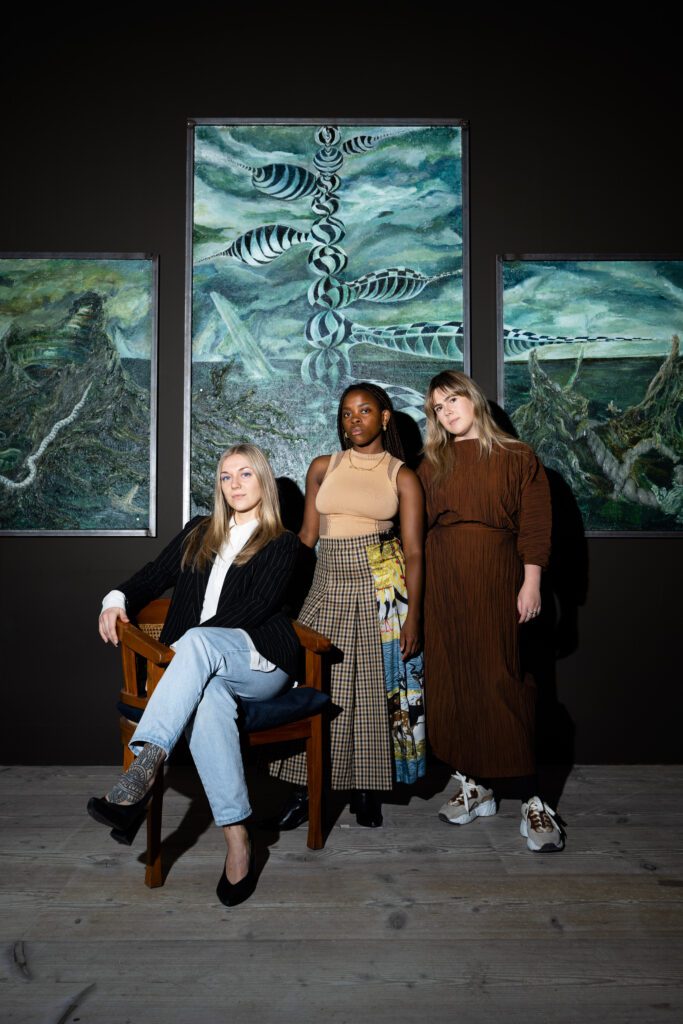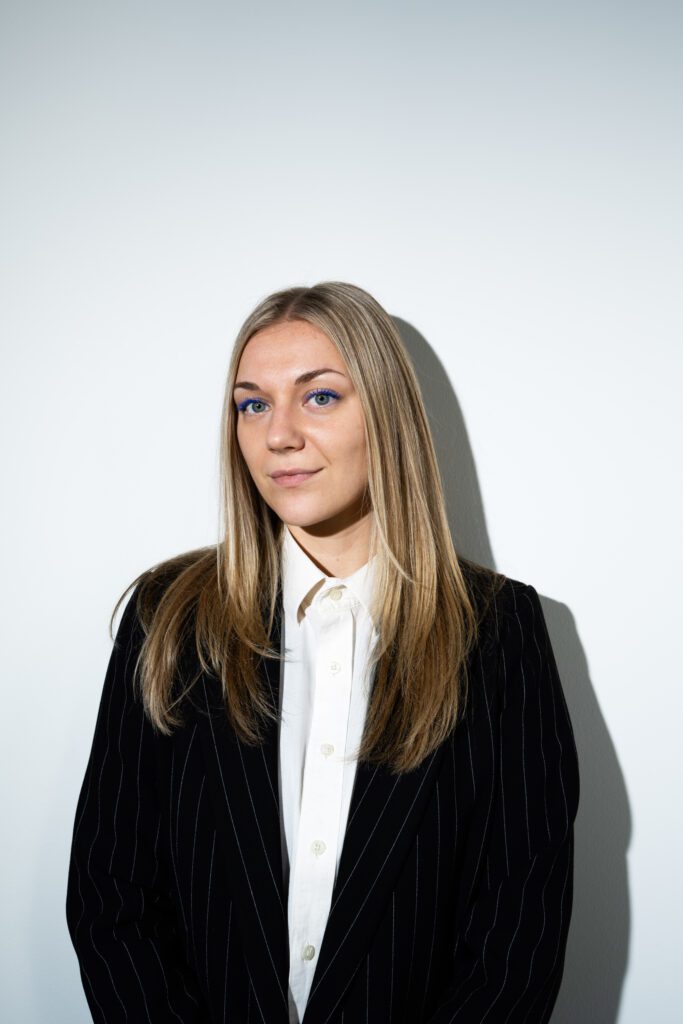Read more about the Curatorial Team
Moderator, Creative Producer, and Program Maker Shaquille Shaniqua Joy sat down with our Curatorial Team to learn more about the exhibition and the process behind the creation of Knowing Cotton Otherwise.
At the beginning of last summer, I joined the advisory panel of a new exhibition at the Fashion for Good Museum in Amsterdam. When I first heard that the topic is cotton, I started thinking about the negative connotation I have with it, mainly based on its role in history. Since this subject has been recently addressed more frequently in the museological context, I was intrigued to hear how the curators would deal with its complexity. Several months later, the exhibition opened its doors for visitors, and I took the chance to sit down with the curatorial team. I went into conversation with Musoke Nalwoga, Alyxandra Westwood, Sophie van Duren and Sophie Douala to hear about their process of creating Knowing Cotton Otherwise.
Exploring a subject that carries so many stories needs time. This is why the exhibition was in the making for almost a year. The amount of time made the curators delve into a process in which they questioned everything, from what cotton is as a plant and cultural carrier to its history and what it means to tell the story within this institution today. Their process of curating went beyond only questioning what cotton is. Instead, they raised questions such as: How does this story break apart as it moves into the audiences and who has the right to tell it? But they also asked: If you go back, what does sustainability mean on an individual level?
Musoke Nalwoga, who joined the team as a freelance curator, says that for her, it was important to find a way how they as a team could quickly come together. All decisions were made “consistently collective”, says Musoke, adding that throughout the entire exhibition there is not a single decision that was made by one person. Even within their collectivity, they branched out by inviting various people to look at the work and voice their thoughts and criticisms. This model of operating is also visible when looking at the exhibition. There are many types of collectives working together to communicate that no one can change the (fashion) world on their own.
The result is an exhibition that balances factual information with metaphorical expressions. It shares the stories around cotton by including local artists with various backgrounds and international organisations. Literal facts on the reality of farmers and how the seed gets processed and grows into a plant come together with the stories about people’s connections to cotton. The question that led the curators to this balance in their selection was: How do you tell painful stories without triggering people? The answer to the question was to introduce poetry as a pedagogy. Paintings, installations and sculptures invite us to learn about the subject through a metaphorical point of view, with text that gives more context. Fashion for Good Museum curator Sophie van Duren explained that she wanted to step away from something expected to make the audience think deeper about the connection of the art with the subject. In Sophie’s words, “How can you be inspired by something that you’re already expecting to see?”
When it comes to the actual space, artist Sophie Douala, who designed the exhibition, says, “I was always thinking about what I expect when I go to a museum and what makes me feel good. Sometimes when going to museums you see amazing art in a space that is not inviting and comfortable.” That is why it was important to her to create a feeling of comfort in learning through an environment that invites you to take a seat, learn, get inspired and come back. The stories collected by the curatorial team spread throughout the museum in a purposely nonlinear way which Sophie Douala compares to a “spider web”, illustrated through eight subject categories. The curators introduced these eight themes to communicate that cotton is a layered subject with many stories. Additionally it gives the visitors, who get to experience a mix of facts and art in the same room, guidance and background knowledge.
When asked what they have taken away from creating Knowing Cotton Otherwise, Fashion for Good curator & education coordinator Alyxandra Westwood mentions that it “made her realize how instrumental cotton was in structuring civilisation as it is right this minute.” She also says ”a sustainability illusion is that you can do everything perfectly” and explains that, from her perspective, it is more about being aware and promoting various narratives. Musoke adds that people should leave inspired in a way that they feel part of the story on their own personal level.
There are many stories to tell, but there is no space to do it all at once. Not believing in a static form, the curators created more room for various perspectives throughout time by introducing three phases. With the story of cotton being ever-evolving, the exhibition also has to evolve and spread out. It, therefore, extends to Amsterdam Southeast, where another layer of the story, around end of life in relation to street culture, can be explored at OSCAM. And those who are now curious about Knowing Cotton Otherwise can visit the Fashion for Good Museum until October 2023, with new phases opening in February and June.




